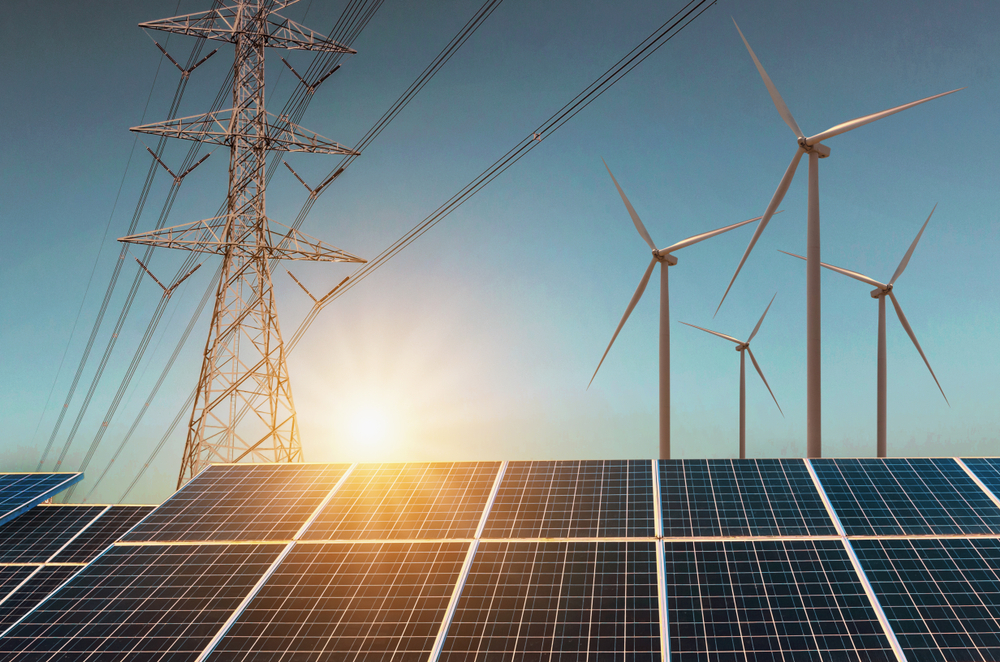Berkeley Lab report looks at how electricity stakeholders view future utility investments

Cyber threats and natural disasters are testing the resilience of America’s electricity systems and forcing stakeholders to prioritize how best to successfully make investments that mitigate the resulting challenges and opportunities.
“There is no one-size-fits-all approach. This is not about eliminating risk, but managing it,” said Scott Aaronson, vice president of security and preparedness for the Edison Electric Institute (EEI), during an April 30 webinar on a new U.S. Department of Energy-funded (DOE) investments report recently published by the Lawrence Berkeley National Laboratory.
EEI, which represents the nation’s investor-owned utilities, was one of several organizations to submit position essays for the new Utility Investments in Resilience of Electricity Systems report. The other contributors were the Organization of MISO States, the National Rural Electric Cooperative Association, and the National Association of State Utility Consumer Advocates.
The new Berkeley Lab report brings together organizations representing state regulators, utilities and consumers to discuss the overall scope of resilience needed, how to decide what investments are most impactful, and the roles of local, state and federal officials.
The report is the eleventh in the Future Electric Utility Regulation series from Berkeley Lab that’s funded by DOE, which generally said in the report that it hopes the series will better support and inform ongoing discussions and decisions by public stakeholders — including regulators, policymakers and the industry — around the future of regulation of electric utilities.
More specifically, the report contributors tackled resilience-related items.
“The unique multi-perspective approach highlights different views on the future of electric utility regulation and business models and achieving a reliable, affordable and flexible power system to inform ongoing discussion and debate,” explained Lisa Schwartz, project manager and technical editor for the Berkeley Lab Electricity Markets and Policy Group, during last week’s corresponding webinar, in which representatives from each organization summarized their contributed report viewpoints.
Their viewpoints answered five key questions related to utility investments to improve the resilience of electricity systems:
1. What level and scope of resilience do we need and how much are we willing to pay?
2. Who’s responsible for resilience and how should other entities coordinate with utilities when there are mutual benefits?
3. What types of utility investments have the most impact on improving resilience and how can utilities and regulators tell whether utility investments in resilience are impactful?
4. Should utilities take more proactive approaches to investments in resilience?
5. How can decisionmaking about resilience investments be improved?
Regarding the best utility investments in resilience, for instance, Lauren Azar, technical consultant for the Organization of MISO States (OMS) and currently an attorney in private practice who helped OMS develop its essay for the report, provided the state regulator perspective. OMS is a nonprofit, self-governing organization of representatives from each of the 17 regulatory bodies having retail jurisdiction over participants in the Midcontinent Independent System Operator Inc., also known as MISO.
“There can’t be a set definition for how much resilience is needed because there are unique answers for each state,” Azar said during the webinar.
For example, Azar pointed to such examples as different high-impact, low-frequency (HILF) events, as well as differing critical infrastructure, priorities and regulatory structures.
“So how does one decide what a regulatory body should do?” she asked. “To evaluate proposed resilience investments, it’s likely best to use risk analysis or cost-benefit analysis” that take into consideration either specific probabilities (i.e. risk-based) or a result driven by an evaluation of the scope of damages (cost-benefit).
In Azar’s opinion, the most impactful investments would be those made in the distribution system; those that address multiple threats, as well as reliability and resilience; and those related to response, adaptation and recovery.
“Some good ways to enhance resilience,” according to Randy Elliott, regulatory counsel for the National Rural Electric Cooperative Association (NRECA), “are to harden distribution against weather risks, pursue a balanced resource portfolio and enhance cybersecurity.”
Dispersed responsibility for resilience, Elliott added, would enable electric utilities — working with regulators and their communities — to be key decisionmakers on resilience investments for their systems.
“Co-ops are especially well-positioned in this regard, given their close relationships with their local communities,” he said. “Resilience can and should be a component of all utility investment decision-making.”
EEI’s Aaronson said that costs should be considered to inform risk-based investments.
“There is no simple answer or one-size-fits-all approach to resilience,” Aaronson wrote in EEI’s response for the report. “The level and scope of resilience investments should be informed by risks and potential consequences to the electric system and those it serves.”
Risks to the system from cyber and physical attacks, fuel availability and security, and extreme weather are evolving rapidly to varying degrees across the nation, as are customer needs and expectations, he said.
“The most impactful resilience investments are those that enhance resilience against a multitude of hazards,” Aaronson said. “By focusing on managing potential consequences, rather than simply prevention, electric companies avoid chasing the latest defensive measure against always evolving threats and, instead, prepare to respond to all hazards.”
Prioritizing assets also will help an electric company ensure more efficient resilience investments, he said, adding that electric companies and their regulators should work together to determine the right investments to improve the resilience of the energy grid for certain localities or regions.
Aaronson said some specific measures that already have shown value include undergrounding infrastructure, upgrading transmission and distribution pole materials, using smart energy infrastructure, protecting cybersecurity, and ensuring that the deployment of distributed energy resources (DERs) enhance overall grid resilience, among others.
“Given limited resources and an always evolving threat landscape, prioritization of investments and a focus on consequence management will be key components to improving resilience,” said Aaronson. “Moreover, all stakeholders will have to grapple with questions about costs and benefits, especially when making investments to address high-risk, low-probability events or investments based on evolving research and new data.”
